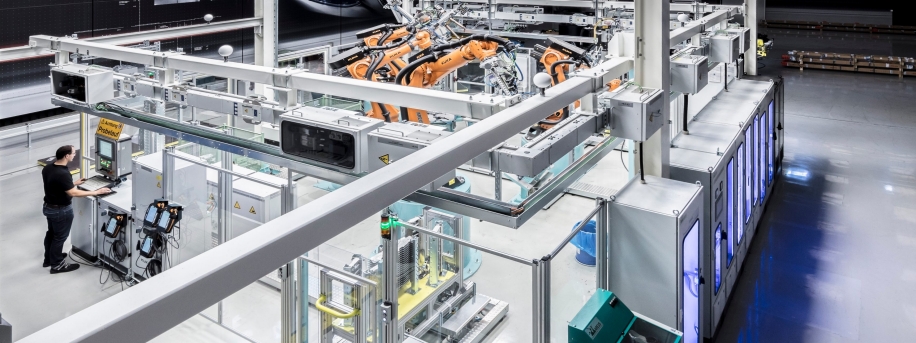The EU’s AREUS research project (Automation and Robotics for European Sustainable Manufacturing) brought together 13 partners from industry and research facilities to test a future energy platform for automotive manufacturing facilities. The automotive industry’s goal in the project was to increase energy efficiency and ensure sustainability through the use of renewable energy sources in combination with modern energy storage units. A further objective was to optimize resource utilization for installation technologies and the electromagnetic compatibility of production equipment. “Caution! Test run.” The sign is a warning about what goes on here, although at the moment everything is quiet. Behind a security fence, four robots stand rigidly upright, their grips holding vehicle body components in a manner that makes it seem as if their movement has been frozen in time. However, the robots will begin moving again shortly, when they’ll start welding, gluing, riveting, and placing finished door hinges for the Mercedes-Benz CLS into carriers.
In the TecFactory – an innovation and development center operated by Daimler’s Production Technology department in Sindelfingen, Germany–new manufacturing processes are being developed and tested under real-world conditions. The approach utilized for the project involves switching from an alternating current topology to a direct current topology – i.e. an industrial DC smart grid. The layout of the AREUS facility is based on a real manufacturing cell from the body-in-white shop. The cell was altered to include a DC architecture and equipped with modified components and machinery ready for connection to a DC supply. The AREUS idea is to have a direct-current network supply robots with “green” electricity, some of which is subsequently recovered and temporarily stored. Daimler is using a real manufacturing cell to find out in detail how production processes can be made more energy efficient and how energy from renewable sources can be […]

